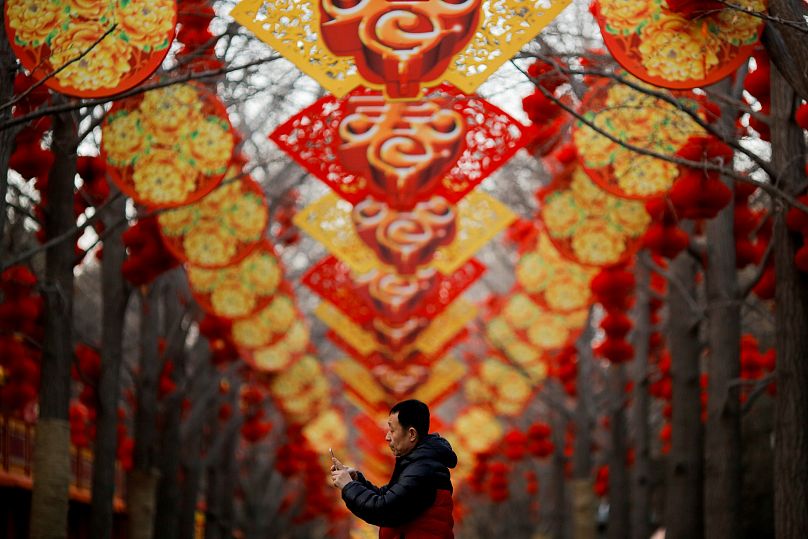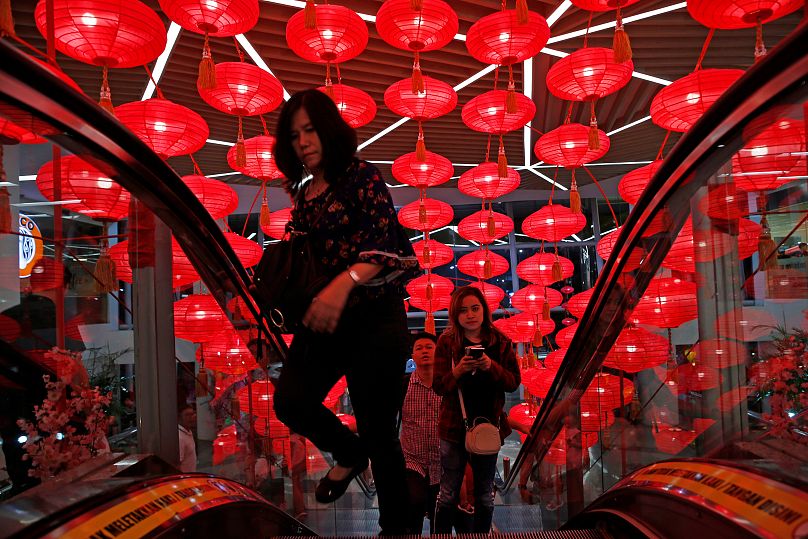Chinese New Year begins on Friday, but how and why is it celebrated?
Chinese New Year begins on Friday, with millions of people around the world set to welcome the Year of the Dog with traditional celebrations and rituals.
Unlike the "Gregorian" calendar, which sees the New Year always start on January 1, the date of the Chinese New Year changes each year based on the lunisolar calendar.
Each Chinese year is given its name from the Chinese zodiac. Like the western zodiac, it is divided into 12 sections. However, these are all characterised by an animal and last a lunar year rather than a month.
The other zodiac animals are the Rat, Ox, Tiger, Rabbit, Dragon, Snake, Horse, Sheep, Monkey, Rooster and Pig.
Celebrations
Celebrations will take place around the world this week, with some of the largest festivities outside of Asia set to be held in London.
Rome will also hold large celebrations, as the Italian capital is twinned with China's Beijing.
A popular part of New Year celebrations is the Wishing Tree. Dating back to the 18th century Qing dynasty, it has been a tradition to hang red wishing cards on the tree’s branches.
Historically, the cards were tied to oranges, which were then thrown over the branches of the tree. According to tradition, if the card hung to the tree, the wish would be granted in the coming year.
However, following accidents of branches falling and injuring those gathered underneath, many now hang their wishes onto racks near the trees.
The giving of red envelopes, often filled with money, is another tradition of Chinese New Year.
Parents and grandparents often give the gifts, called hongbao in Mandarin and lai see in Cantonese, to children.
The red colour is a vital part of these gifts, as it symbolises happiness and good luck. The envelope itself is often seen as more important than the money it contains, as it is a way of sending good luck and wishes to the recipient.
The Lantern Festival
Chinese New Year celebrations are not just held on one day, or over one weekend. Instead they run until the Lantern Festival, celebrated on the 15th day of the New Year.
This celebration is symbolic of the new spring, and as such is held on the first full moon of the New Year.
Multi-coloured and often extravagant lanterns are lit and released to float into the night sky. This can symbolise one letting go of the previous year, or a personal change to be made over the next year.
Like the envelopes, many lanterns are red and symbolise hope for the coming 12 months. However, in modern times many of the lanterns have become more complex, and the festival has even been commercialised as the equivalent of Valentine’s Day in Hong Kong and Taiwan.
Much like other aspects of Chinese New Year, the Lantern Festival is now celebrated around the world, including in major European cities.
The biggest annual human migration
Along with celebrations across the globe, Chinese New Year boasts the world’s largest annual human migration.
About 2.98 billion trips are expected to be made this year as people travel to see family and friends to celebrate the festival, according to Chinese news agency Xinhua.
This story has been modified from a version published in 2017.













